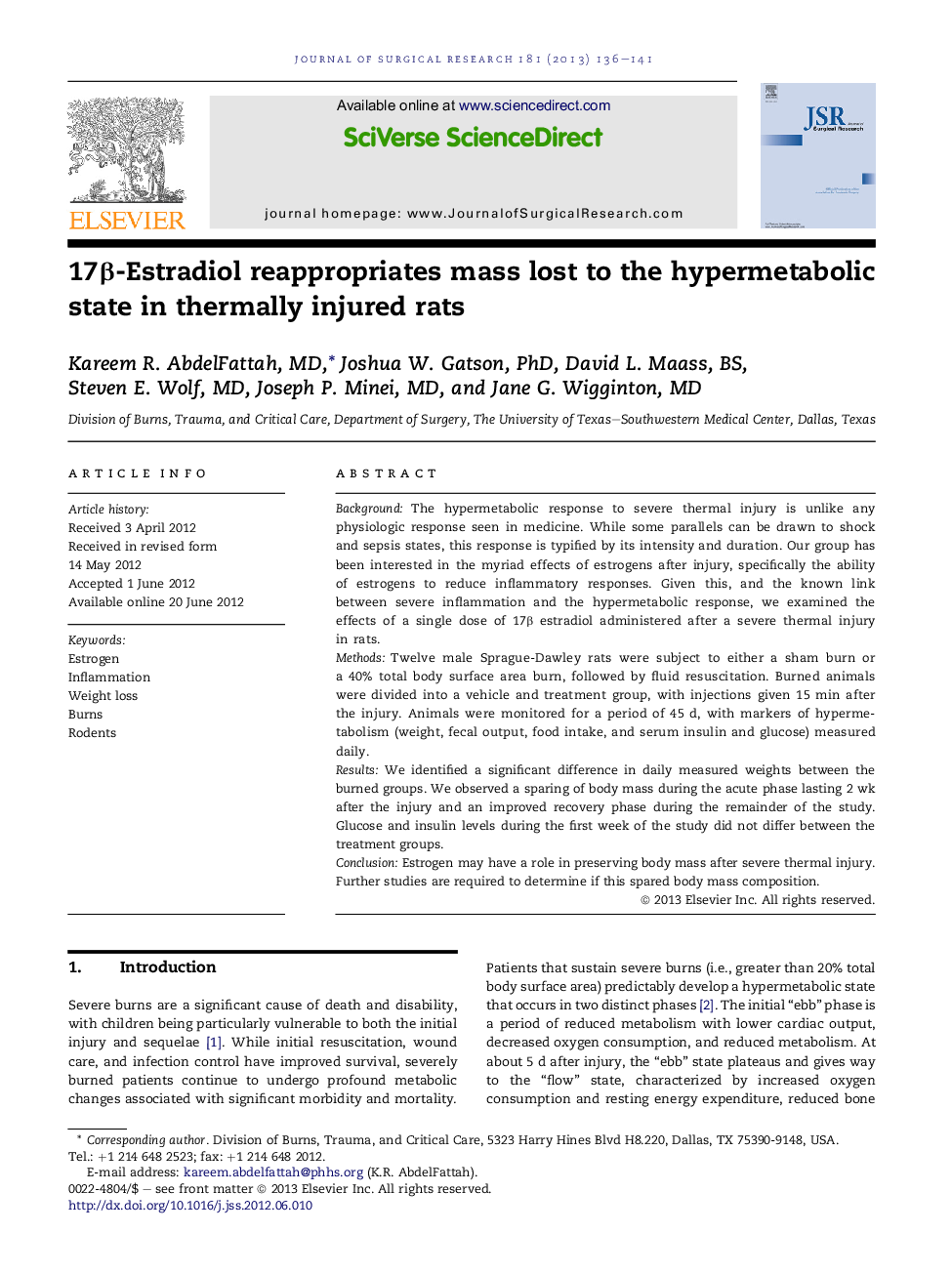| Article ID | Journal | Published Year | Pages | File Type |
|---|---|---|---|---|
| 6254005 | Journal of Surgical Research | 2013 | 6 Pages |
BackgroundThe hypermetabolic response to severe thermal injury is unlike any physiologic response seen in medicine. While some parallels can be drawn to shock and sepsis states, this response is typified by its intensity and duration. Our group has been interested in the myriad effects of estrogens after injury, specifically the ability of estrogens to reduce inflammatory responses. Given this, and the known link between severe inflammation and the hypermetabolic response, we examined the effects of a single dose of 17β estradiol administered after a severe thermal injury in rats.MethodsTwelve male Sprague-Dawley rats were subject to either a sham burn or a 40% total body surface area burn, followed by fluid resuscitation. Burned animals were divided into a vehicle and treatment group, with injections given 15 min after the injury. Animals were monitored for a period of 45 d, with markers of hypermetabolism (weight, fecal output, food intake, and serum insulin and glucose) measured daily.ResultsWe identified a significant difference in daily measured weights between the burned groups. We observed a sparing of body mass during the acute phase lasting 2 wk after the injury and an improved recovery phase during the remainder of the study. Glucose and insulin levels during the first week of the study did not differ between the treatment groups.ConclusionEstrogen may have a role in preserving body mass after severe thermal injury. Further studies are required to determine if this spared body mass composition.
